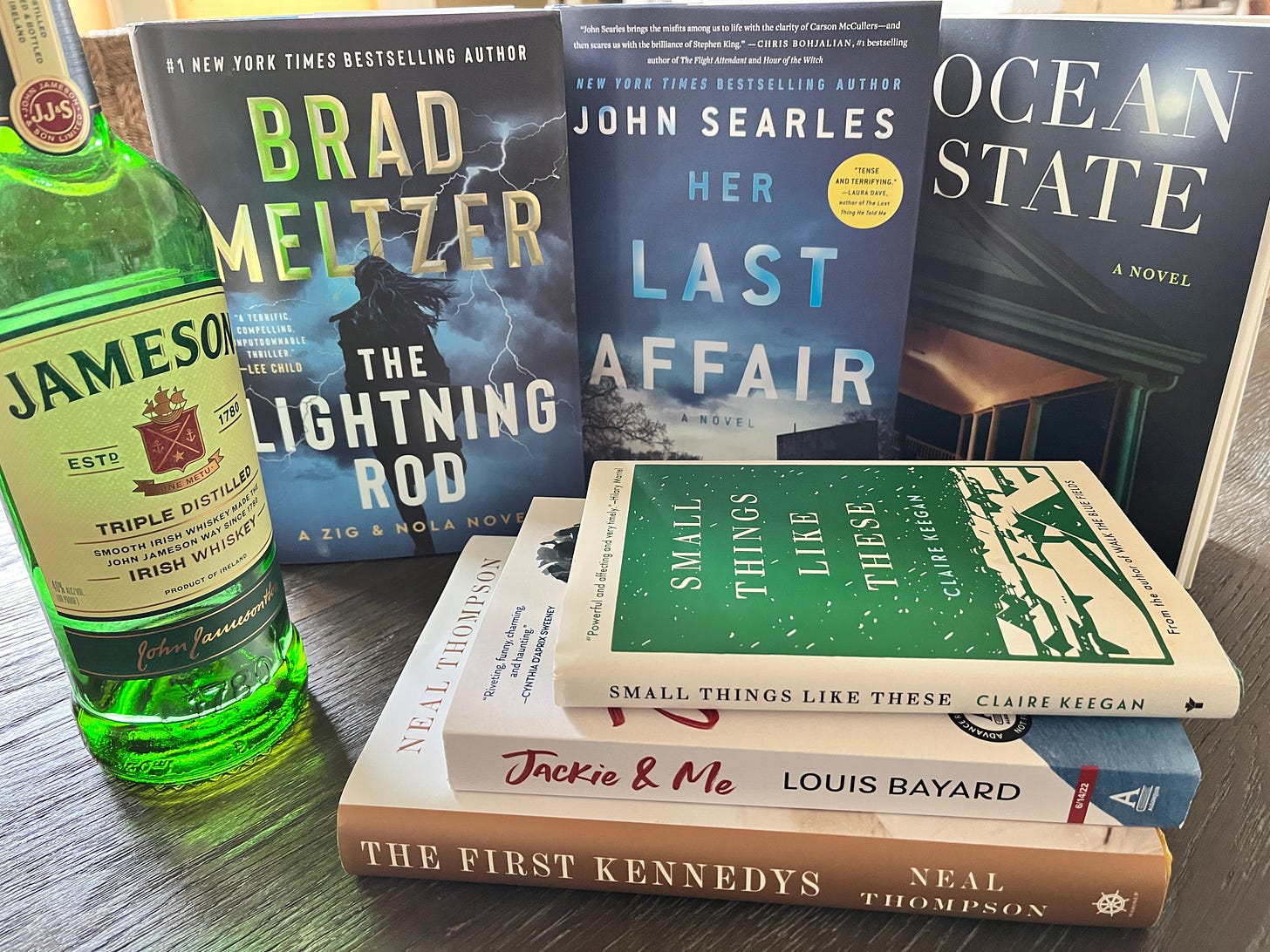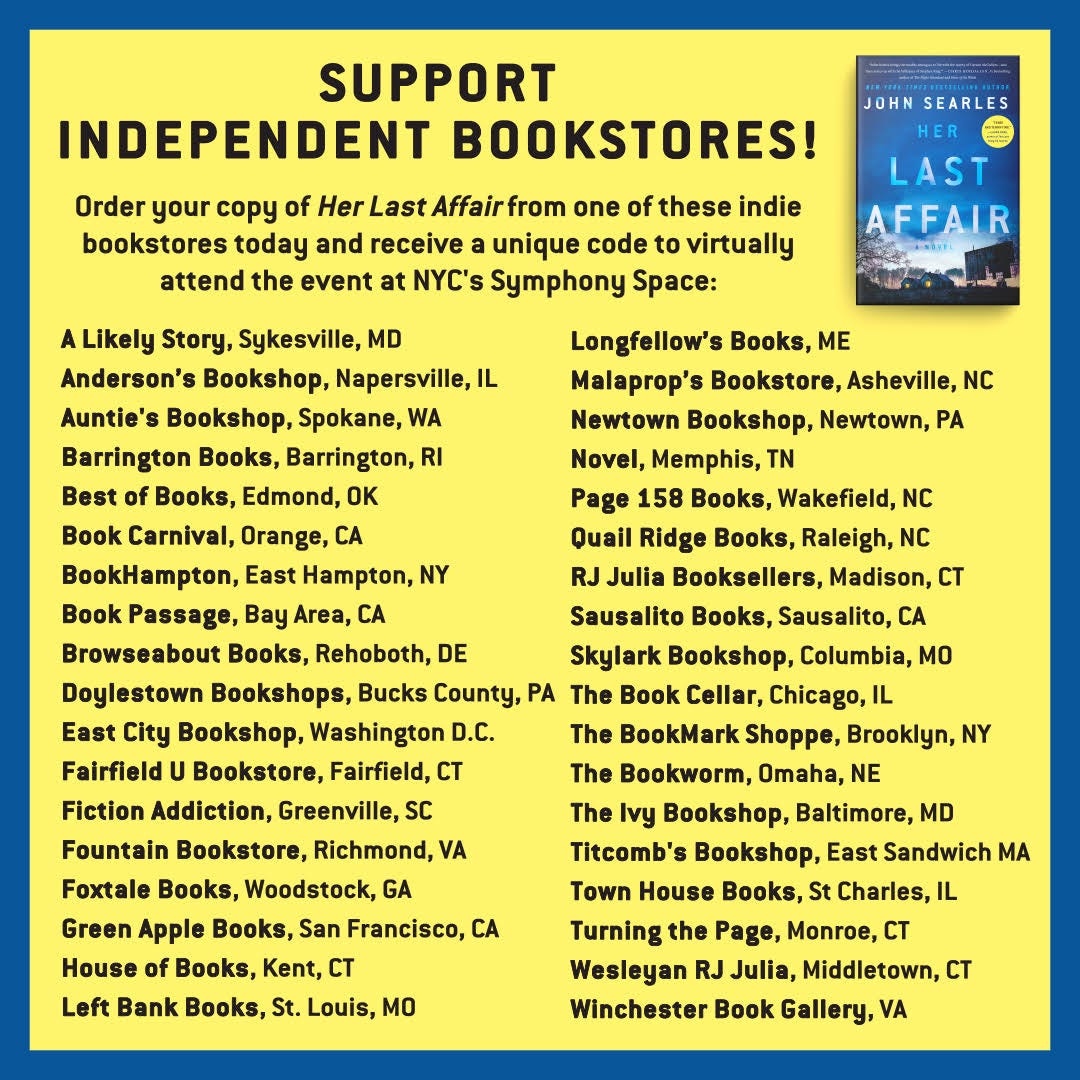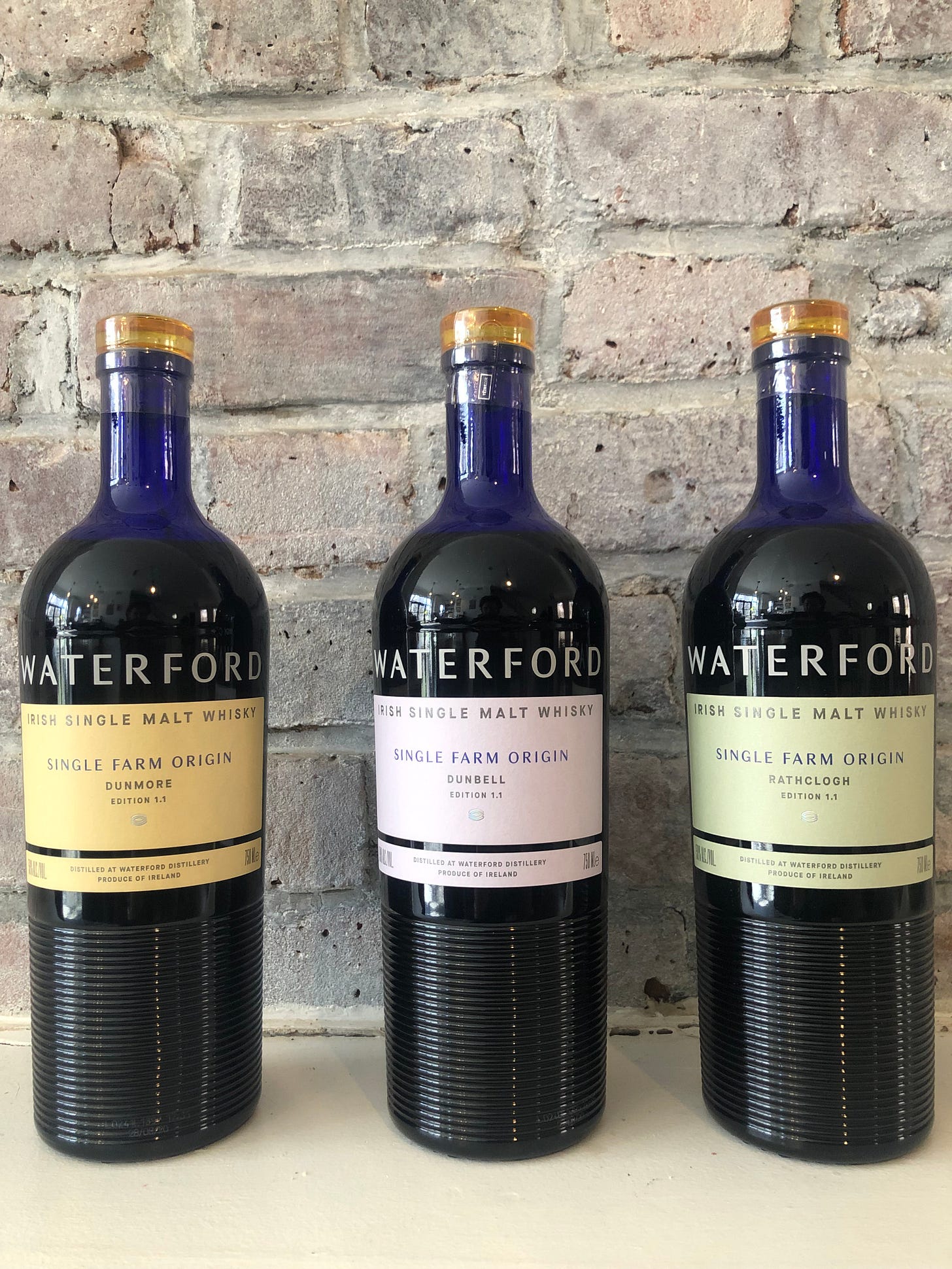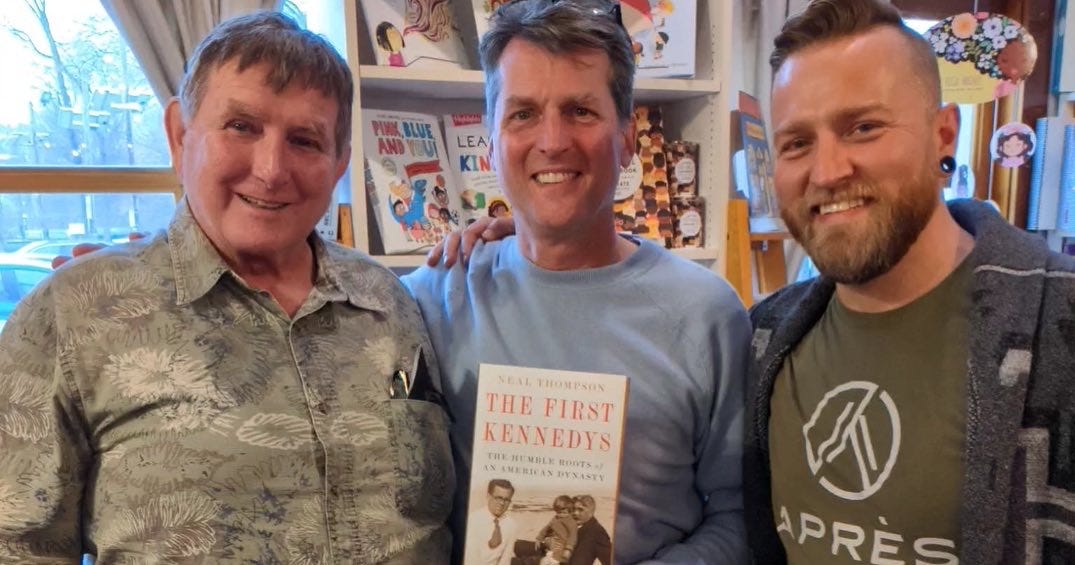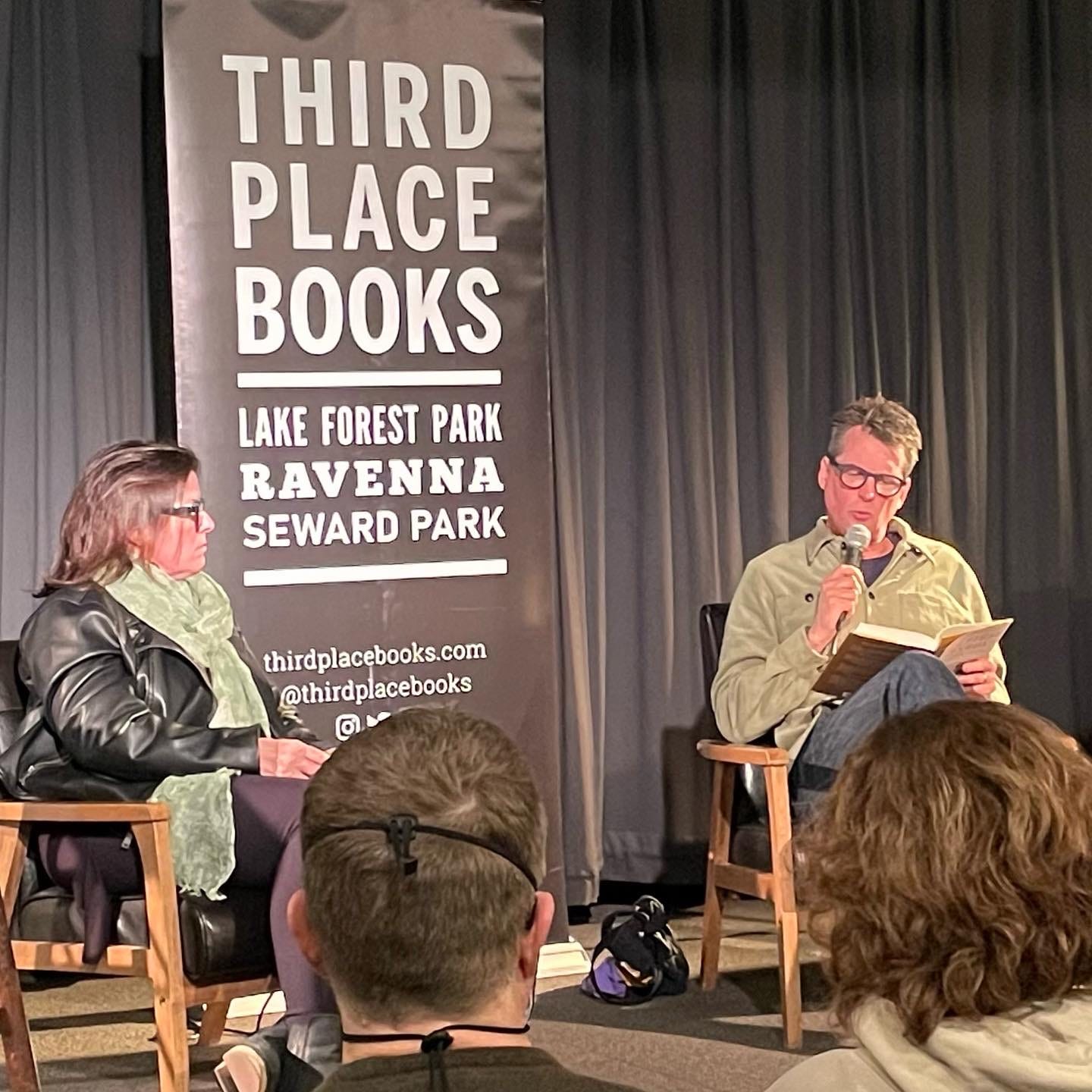Hello friends and readers…
My book THE FIRST KENNEDYS: THE HUMBLE ROOTS OF AN AMERICAN DYNASTY is out in the world, and since I spent nearly two weeks on the road — and am off for more travels tomorrow (you can check my tour schedule HERE) — I’ll jump right into this month’s somewhat Irish-themed books and drinks.
Small Things Like These (Graywolf) — by Claire Keegan
This is a taut, finely-woven story set in small-town Ireland in 1985 — beside the River Barrow, “dark as stout, swelled up with rain” — as coal merchant Bill Furlong’s pre-Christmas delivery to a local convent reveals the town’s hidden secrets: young women held against their will. The small, beautifully-observed details of the work-a-day build to a thrilling, heartbreaking moment of bravery and heroism. The book is rightly being hailed as a quiet masterpiece.
Note: Keegan’s story is set in the town of New Ross, which is featured in The First Kennedys — it’s the town from which John F. Kennedy’s great-grandfather Patrick left in 1848, during the Irish Potato Famine.
—
The Lightning Rod (William Morrow) — by Brad Meltzer
It’s not often you find a pair like this — a military mortician named Zig and a wild-child turned military artist turned hunted operative named Nola (the title’s “lightning rod”) — in a riveting story packed with Cold War secrets, underground doomsday sects, top-secret warehouses full of chemical and biological weapons stockpiles… I emailed Brad to ask how he came up with the characters of Zig and Nola, who he’d first introduced with his 2018 book, The Escape Artist…
I do a lot of volunteer work with the USO, which is how I found the morticians at Dover Air Force Base. When our fallen troops come home, the morticians will spend twelve hours rewiring someone’s jaw and smoothing it over with clay so a family can see their son one last time. That’s a hero. So Zig is based on them. He’s full of heart. As for Nola, since WWI, the U.S. government has had a painter on staff, who paints disasters as they happen, from storming the beaches of Normandy to 9/11. When I heard about these “war painters,” I thought it was such a crazy job, I said, “I want to meet him.” And they said, “Her. You want to meet her.” Right there, Nola was born.
—
Ocean State (Grove Atlantic) — by Stewart O'Nan
O’Nan is a fabulous writer, and his latest is a haunting story of teen love and murder set in the moody, working-class former mill town of Ashaway, Rhode Island. We know from the first page that violence is coming, yet we yearn for these heartbreaking characters — two high school girls, their shared boyfriend, their respective families — to somehow avoid the wreckage. As Megan Abbott put it, “As the story hurtles toward an act of violence that feels both impossible and inexorable, we find ourselves wanting to stop and protect all of them.”
Cool tidbit: I learned from O’Nan’s Instagram that he’s hidden the titles of 54 songs by Angel Olsen throughout the book. Happy easter egg hunting…
Her Last Affair (Mariner) — by John Searles
John’s latest, inspired by his own personal losses, is a dark and twisty but big-hearted, witty and thoughtful story of misfit characters striving to recover from their own hardships — and, like many of us, to find love and, well… not die. I reached out to ask John a few questions about the book, which is out next week.
Origins: There are so many different sources of inspiration for Her Last Affair, but I knew I wanted to write a story about love... and its power to impact our lives for good and bad. Also, I wanted to write about people looking back at different stages of life and reconnecting with lost loves. We all have those people who once held so much power over our hearts and minds... the book explores what might happen if we brought those past relationships into the present. Also, the old drive-in movie theater setting came to me because I pass an abandoned drive-in on my way to visit my mom.... It's overgrown by trees and no one probably notices it. But I do. I always wondered about it... Who owned it? What was it like in its heyday? It led me to start researching abandoned drive-ins on-line and I found so many haunting and beautiful images of these places all across America forgotten by time. It just seemed like such a unique and compelling setting for a story!! How could I resist?
Mood: The old drive-in setting lends a noirish quality to the story, but it's also (I hope!) darkly funny in places and ultimately (I hope again!) a poignant meditation on love.
Secret weapon: That's an easy one! My editor at HarperCollins: Kate Nintzel. She's such a smart and insightful reader. Kate helped so much to guide and shape this book. I am lucky to have her in my life.
Favorite line: I think the first line is a pretty good hook — "Every marriage has its secrets" — because it creates a question in the reader's mind about what the secret in this story will be. Also, I might be the only one who thinks it is funny, but there's a line that makes me laugh: When Linelle, a middle-aged woman, is trying to work up her courage to engage in on-line Skype sex with a man from her past, it says: "Plenty of people are seasoned experts when it comes to getting naked in front of a laptop. Linelle is not one of them." I wouldn't say that's my favorite in terms of most meaningful, but I remember laughing when I wrote it!
Risk: I find the whole business of writing a risk! I never know if I can pull it off until I write the very last sentence. In the case of Her Last Affair, I created three seemingly disconnected storylines that come together in the second half of the book. But I needed to create a sense for the reader that this was all leading someplace. That's how I came up with the movie quotes that open each chapter and act as clues about what's coming next. The quotes are intended to give a sense of unity to it all... plus they work with the drive-in setting. Also, when the stories do come together, I needed each storyline to work and all the character's actions and motivations to make sense. That part took tremendous work and so much back and forth with my editor and me. There were some truly frustrating moments when I didn't think I could do it, but eventually, I think I got it right! And I'm really proud of it.
Fuel: Love from my husband and our dog... the long walks we've been taking most afternoons during the pandemic. My family and friends. Reading great books by other writers. Oh, and speaking of other writers, my fellow author friends who are so supportive. I feel so grateful to them.
*For those in NYC, John will be at Symphony Space on March 22, onstage with Academy Award-nominated actress, Amy Ryan. Those who order a copy at one of the indie bookstores listed below (three of which I’ll be visiting next week) will be given an access code to livestream the event. More at John-Searles.com
Cocktail of the Month…
In honor of St. Patrick’s Day, this month I’m featuring a special guest essay from Clay Risen, an ode to his favorite Irish Whiskey: Waterford. Clay is a New York Times reporter and editor, a whiskey connoisseur, and the author of the beautiful Bourbon: The Story of Kentucky Whiskey box set, among other books about whiskey and U.S. history. More at his website: www.clayrisen.com.
Mark Reynier is best known for his work at Bruichladdich, a once-acclaimed distillery on the Scottish island of Islay that had sat in mothballs until he brought it back to life in 2000. There he helped launch a new conversation around terroir in whiskey: the idea that grain, water and climate can have a profound influence on aroma and flavor, and that distilleries should embrace that fact by using locally sourced grains, peat and other inputs. He left Bruichladdich in 2010, but his interest in terroir continued – and deepened. A few years later he broke ground on a new distillery, Waterford, in southeastern Ireland. Bruichladdich, it turns out, was merely Reynier’s rough draft. Waterford is his opus.
Reynier begins by buying barley from 97 farms around Ireland. Grain from each farm gets its own bay in a massive barn he calls “the cathedral,” where it dries for six months. It is then malted, fermented, distilled and aged separately, preserving the uniqueness of each farm’s harvest. The whiskey is bottled singly, or combined into a cuvee. Consumers can track all of this online, getting granular detail about the grain – where it came from, what soil it grew in, what climate fostered it – and the distillation process.
The results speak, or rather taste, for themselves in subtle but obvious differences among the single-farm bottles. Although the idea of terroir in whiskey is still much-debated, Reynier’s Irish single malt whiskey makes a powerful argument for its existence, and for its importance to the future of the spirit.
Stating the obvious: Waterford should be drunk neat or with a splash or a cube or two. But… if you’ve got Jamesons, check out how to make an Irish Whiskey Old Fashioned from Peter Suderman’s fun newsletter, “Cocktails with Suderman”:
Playlist of the Month…
This month’s theme? Irish! I didn’t have time to create a handmade playlist, so here are two from Spotify — pub tunes and folk tunes.
For THE FIRST KENNEDYS, among my upcoming events is one with Ace Atkins at Square Books in Oxford, MS (March 23); one with my pal Denise Kiernan, at Malaprops, in Asheville, NC (March 24); one with Wajahat Ali (his new book is Go Back to Where You Came From) at Politics & Prose in DC (March 26). Other events HERE, including a March 30 visit to my alma mater, the U. of Scranton.
More updates: I wrote a piece for the Washington Post, a story for Time, and did an interview with the Associated Press. Recordings of some of my bookstore and event talks are on my website, HERE. (More news and reviews = HERE.)
Thanks to those who’ve reached out to let me know they’ve bought and read and even enjoyed THE FIRST KENNEDYS. Please keep your notes coming, and please tell a friend or post a pic or give it a review at Amazon or Goodreads.
Gratefully yours… Sláinte!
-Neal
Find me on Instagram; sometimes on Facebook, Twitter, LinkedIn, Goodreads
“This is not just the story of the Kennedys; Thompson paints a picture of life for many Irish immigrants. History buffs should pick up this book immediately.” —Booklist
“Bridget Kennedy emerges as such a formidable woman in Thompson's telling.” —Irish Central
“Now comes Neal Thompson, who in his splendidly heterodox The First Kennedys shows that before the lurid patriarchy of Joe there was the winning matriarchy of Bridget.” —Air Mail
“In this fascinating book, Neal Thompson gives Bridget her due—and in the process, makes us reconsider JFK’s origin story.” —Alexis Coe
“a chronicle that ranks with the richly evocative work of Doris Kearns Goodwin and Thomas H. O’Connor .” —Boston Globe
“It's great storytelling." —Timothy Egan




